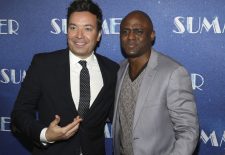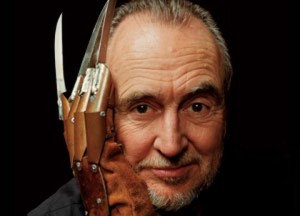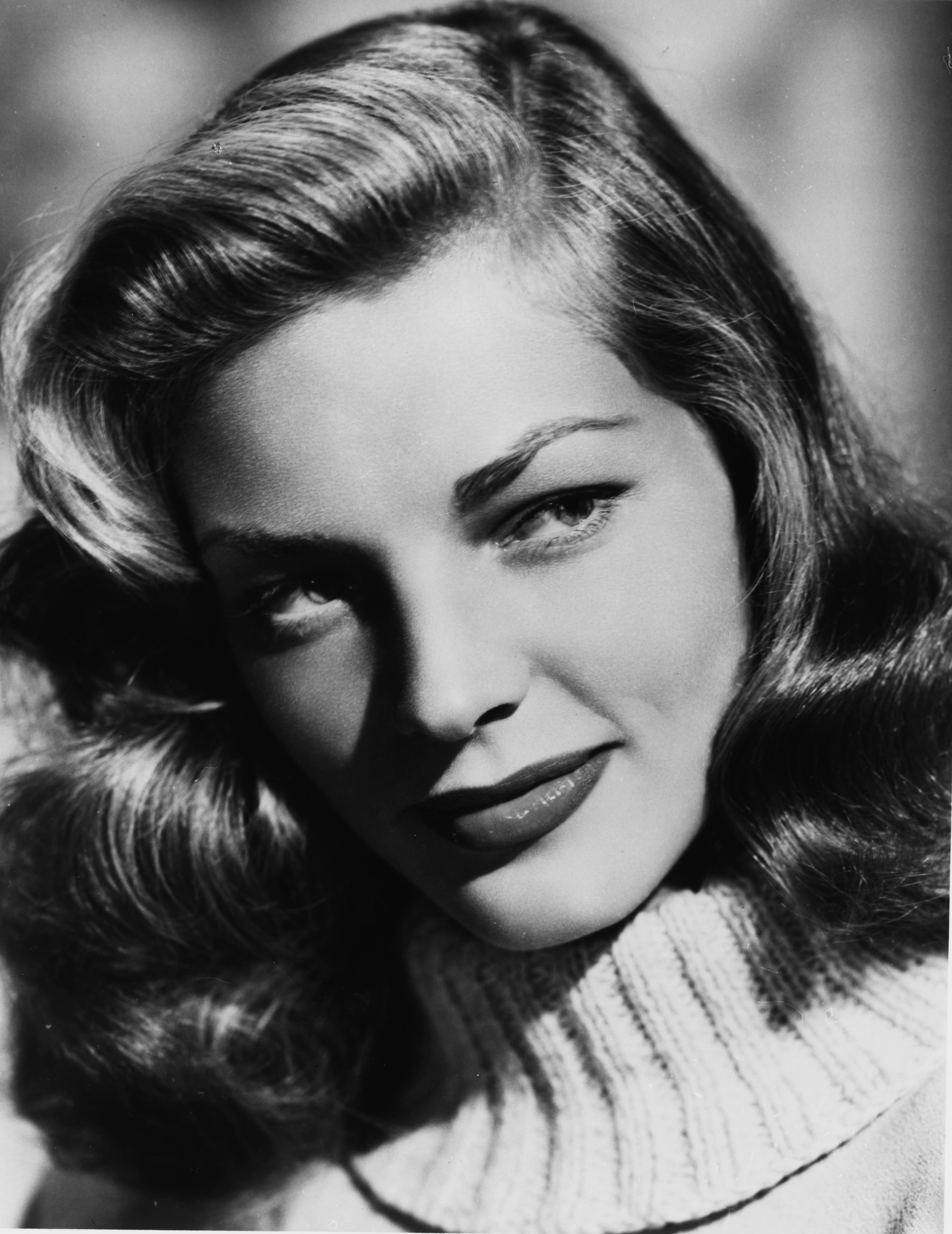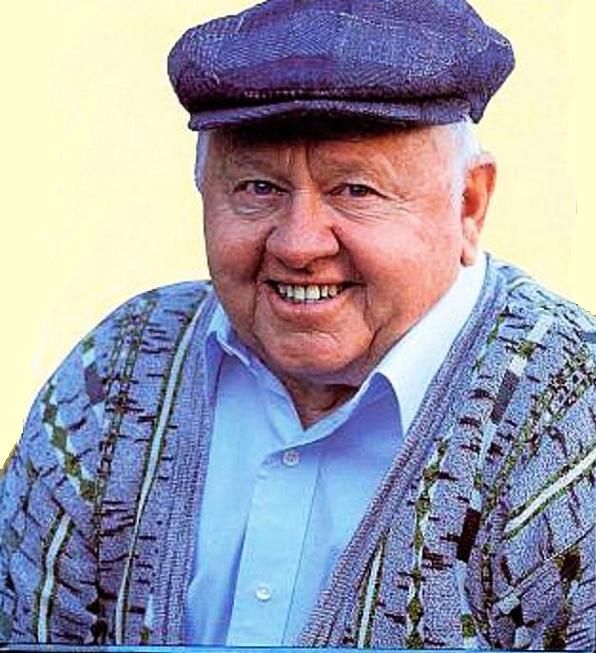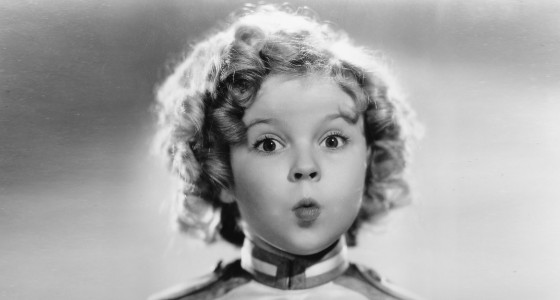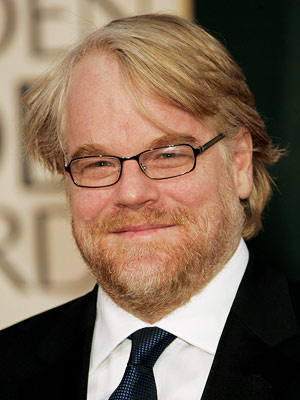Birthday wishes go out to Wayne Brady, Dana Carvey and all the other celebrities with birthdays today, June 2nd. Photos: Associated Press.
Actress-singer Sally Kellerman is 81. Actor Ron Ely is 80. Filmmaker and movie historian Kevin Brownlow is 80. Actor Stacy Keach is 77. Rock musician Charlie Watts is 77. Actor Charles Haid is 75. Rhythm and blues singer Chubby Tavares (Tavares) is 74. Movie director Lasse Hallstrom is 72. Actor Jerry Mathers is 70. Actress Joanna Gleason is 68. Actor Gary Grimes is 63. Pop musician Michael Steele is 63. Rock singer Tony Hadley (Spandau Ballet) is 58. Actor Liam Cunningham is 57. Actor Navid Negahban is 54. Singer Merril Bainbridge is 50. TV personality-producer Andy Cohen (“The Real Housewives” TV franchise) is 50. Rapper B-Real (Cypress Hill) is 48. Actress Paula Cale is 48. Actor Anthony Montgomery is 47. Actor Wentworth Miller is 46. Rock musician Tim Rice-Oxley (Keane) is 42. Actor Dominic Cooper is 40. Actress Nikki Cox is 40. Actor Justin Long is 40. Actor Deon Richmond is 40. Actress Morena Baccarin is 39. Rhythm and blues singer Irish Grinstead (702) is 38. Rock musician Fabrizio Moretti (The Strokes) is 38. Olympic gold medal soccer player Abby Wambach is 38. Country singer Dan Cahoon (Marshall Dyllon) is 35. Singer-songwriter ZZ Ward is 32. Actress Brittany Curran is 28. Actor Sterling Beaumon is 23.
Wes Craven, Horror Maestro, Dies at 76
Wes Craven, the famed writer-director of horror films known for the Nightmare on Elm Street and Scream movies, died Sunday after a battle with brain cancer. He was 76.
Craven, whose iconic Freddy Krueger character horrified viewers for years, died at his home in Los Angeles, his family announced. Survivors include his wife, producer and former Disney Studios vice president Iya Labunka.
Craven was a longtime summer resident of Martha’s Vineyard, where he moved permanently three years ago before returning to Los Angeles for work and health reasons.
Craven claimed to have gotten the idea for Elm Street when living next to a cemetery on a street of that name when growing up in the suburbs of Cleveland. The five Nightmare on Elm Street films were released from 1984-89.
Similarly, Craven’s Scream series was a box-office sensation. In those scare-’em-ups, he spoofed the teen horror genre. The movies frequently referenced other horror movies.
Craven’s first feature film was The Last House of the Left, which he wrote, directed and edited in 1972. A rape-revenge movie, it appalled some viewers while generating big box office. Next came another film he wrote and helmed, The Hills Have Eyes (1977).
He invented the youth horror genre again in 1984 with the classic A Nightmare on Elm Street, which he wrote and directed.
He conceived and co-wrote Elm Street III as well, and then after not being involved with the three more sequels, deconstructed the genre a decade after the original, writing and directing Wes Craven’s New Nightmare, which was nominated as best feature at the 1995 Spirit Awards.
His own Nightmare players, Robert Englund, Heather Langenkamp and John Saxon, played themselves in the film.
In 1996 Craven reached a new level of success with the release of Scream. The film, which sparked the phenomenal trilogy, grossed more than $100 million domestically, as did Scream 2 (1997).
Between Scream 2 and Scream 3, Craven, offered the opportunity to direct a non-genre film for Miramax, helmed Music of the Heart (1999), a film that earned Meryl Streep an Academy Award nomination for best actress in the inspirational drama about a teacher in Spanish Harlem.
“We had a very difficult time getting an audience into a theater on my name,” he once said about that film. “In fact, we moved toward downplaying my name a lot on Music of the Heart. The more famous you are for making kinds of outrageous scary films, the crossover audience will say, ‘I don’t think so.’”
Also in 1999, in the midst of directing, he completed his first novel, The Fountain Society, published by Simon & Shuster.
Craven again pushed his genre boundaries with the 2005 psychological thriller, Red Eye, starring Rachel McAdams, Cillian Murphy and Brian Cox. And in 2006 he wrote and directed a romantic comedy homage to Oscar Wilde featuring Emily Mortimer and Rufus Sewell as a segment in the French ensemble production, Paris Je T’aime.
Craven then produced remakes of The Hills Have Eyes (2006) and The Last House on the Left (2009). Craven’s most recent written and directed film, My Soul to Take (2010), marked his first collaboration with Labunka, who also produced Scream 4.
He directed several other thrillers and horror movies including Swamp Thing (1982), Deadly Friend (1986) and The People Under the Stairs (1991).
Craven had recently signed an overall television deal with Universal Cable Productions and had a number of TV projects in development including The People Under the Stairs with Syfy Networks, Disciples with UCP, We Are All Completely Fine with Syfy / UCP, and Sleepers with Federation Entertainment.
He also was executive producing the new Scream series for MTV.
Craven had recently written atnd was to direct the Thou Shalt Not Kill segment for The Weinstein Co.’s Ten Commandments miniseries for WGN America.
He is listed as an executive producer of The Girl in the Photographs, which will premiere at the Toronto Film Festival next month.
Wesley Earl Craven was born Aug. 2, 1939, in Cleveland. His father died when he was 5. Raised in a strict Baptist household, he graduated from Wheaton College with degrees in English and psychology, then earned a masters in philosophy and writing from Johns Hopkins.
He briefly taught English at Westminster College and was a humanities professor at Clarkson College, where he served as a disc jockey for the campus radio station.
Craven had an eye for discovering fresh talent. While casting A Nightmare on Elm Street, he discovered Johnny Depp. He cast Sharon Stone in her first starring role, for Deadly Blessing, and he gave Bruce Willis his first featured role in an episode of the 1980s version of The Twilight Zone.
He wed Labunka in 2004, his third marriage. Survivors also include his sister Carol, son Jonathan, daughter Jessica, grandchildren Miles, Max and Myra-Jean and stepdaughter Nina.
Craven was a nature lover and committed bird conservationist, serving as a longtime member of the Audubon California Board of Directors. He penned a monthly column, “Wes Craven’s The Birds,” for Martha’s Vineyard Magazine.
“I come from a blue-collar family, and I’m just glad for the work,” Craven said in an interview with writer-director Mick Garris in October. “I think it is an extraordinary opportunity and gift to be able to make films in general, and to have done it for almost 40 years now is remarkable.
“If I have to do the rest of the films in the [horror] genre, no problem. If I’m going to be a caged bird, I’ll sing the best song I can.
“I can see that I give my audience something. I can see it in their eyes, and they say thank you a lot. You realize you are doing something that means something to people. So shut up and get back to work.
SOURCE
Lauren Bacall, Dead at 89
SOURCE: Variety
Lauren Bacall, the sultry blonde siren who became an overnight star via a memorable film debut at age 19 opposite Humphrey Bogart in Howard Hawks’ “To Have and Have Not,” died Tuesday at her home of a suspected stroke. She was 89.
The Bogart estate tweeted the news.
Much later in life, she was Oscar-nommed for supporting actress for her role as Barbra Streisand’s mother in 1997’s “The Mirror Has Two Faces.”
Born Betty Joan Perske, “a nice Jewish girl from the Bronx,” she stunned audiences in the forever-after-famous “you know how to whistle” scene in the 1944 romance “To Have and Have Not,” in which she was as flirtatious as possible within the parameters of the Hays Code.
Audiences were impressed; her co-star, the 44-year-old Bogart, even more so. They were soon married and remained devoted to one another for the next 12 years, until Bogart’s death in 1956.
It wasn’t until almost 20 years later that Bacall would emerge from the shadow of being Bogart’s wife/widow and hit her stride, this time onstage, where she scored successes in the comedy “Cactus Flower” and then won two Tonys in musicals “Applause” and, later, “Woman of the Year.”
Her gravel-voiced, sultry persona, however, immediately transformed her into a celebrity. The voice was said to have come from a year shouting into a canyon. Regardless, “the Look,” her slinky, pouty-lipped head-lowered stare, influenced a generation of actresses.
That had less to do with her acting assignments than with her social and political reputation — lying long-legged on President Truman’s piano, bravely protesting with her husband against the House Un-American Activities hearings as early as 1947, campaigning for Adlai Stevenson (twice), or hosting the Rat Pack in Holmby Hills with Bogie and later, in New York, with another famous husband, actor Jason Robards Jr. It has been suggested that her career — she was under contract at Warners for several years — was harmed by her political outspokenness. Bogart did some of his best work in those years, but then, he was Bogart.
Her fierce independence caused her to be suspended from Warners no fewer than seven times. Backed by Bogart, she justifiably complained about the poor material she was handed. That independence sometimes crossed over into diva territory and became more pronounced as time passed.
At AMPAS’ first Governors Awards ceremony in November 2009, Bacall was one of four honorees. Anjelica Huston saluted her by quoting Bacall as saying, “Stardom isn’t a career, it’s an accident,” though Huston said Bacall’s ascendance was not accidental.
Bacall expressed surprise at her own career, saying, “It’s quite amazing the people I worked with — some of the all-time all-time greats.” And she admitted that when Hawks told her he wanted to pair her with either Bogart or Cary Grant, she said she wasn’t impressed with the dese-dem-dose quality of Bogart and said of Grant, “Now you’re talking!”
Bacall’s fierce ambition to achieve stardom began at Julia Richman High School in Manhattan, from which she graduated at 15. By that time she was already doing department store modeling. She studied acting and dancing and enrolled in the American Academy of Dramatic Arts, where she remained only one term. She quit modeling on Seventh Avenue to become a theater usher and got herself a walk-on in “Johnny 2 x 4” in 1942 and an ingenue role in George S. Kaufman’s out-of-town failure “Franklin Street.”
Harper’s Bazaar editor Niki de Gunzberg hired her to model for the magazine, and a 1943 cover photo came to the notice of Hawks, who screen-tested Bacall and put her under contract (which he later sold to Warners). The studio coached her for a year, and then she was slipped into “To Have and Have Not,” where Hawks found that “when she became insolent, she became rather attractive.”
Bogart’s marriage to Mayo Methot was on the skids, and Bacall soon became his fourth wife, bearing him two children over the next dozen years. They appeared together in movies three more times, most memorably in “The Big Sleep” and then in “Dark Passage” and “Key Largo.”
Otherwise, when she wasn’t turning down assignments, she was agreeing to appear in mediocre ones such as “Young Man With a Horn” and “Bright Leaf.” At Bogart’s urging, she bought herself out of her contract shortly before Warners shaved its roster in the wake of the TV boom of the early ’50s.
One of her better assignments, “How to Marry a Millionaire,” teamed her with Marilyn Monroe and Betty Grable, and “Woman’s World” again utilized her glamorous, stylish persona to dress up the proceedings.
On television she co-starred with Bogart and Henry Fonda in a live production of “The Petrified Forest,” which Bogie had done on film in 1935 with Bette Davis and Leslie Howard. She also starred with Noel Coward and Claudette Colbert in the TV production of Coward’s “Blithe Spirit.”
When Bogart succumbed to throat cancer, Bacall threw herself into her work, again in A pictures, but with mixed results. There were impressive efforts like “Written on the Wind” and “Designing Women” and considerably less impressive ones like “Blood Alley” and “Flame Over India.”
After a serious affair with Frank Sinatra, she moved east and appeared onstage in the comedy “Goodbye, Charlie.” She met and married Robards, whose star was on the rise, and they had a son. His drinking problems contributed to their breakup and divorce in 1969.
In 1967, she was the toast of Broadway in Abe Burrows’ comedy “Cactus Flower” (a role she lost to Ingrid Bergman onscreen). She appeared in the comedy for two years, and then starred in a musical stage version of “All About Eve,” called “Applause,” in the Margo Channing role originated by Davis. For it she won a Tony Award, and she played the role in the London version too.
Later screen roles consisted of cameos and character parts in films including “Harper,” “Health” and “Murder on the Orient Express.” She appeared in John Wayne’s last film, 1976’s “The Shootist.” A rare starring opportunity, “The Fan,” was a dismal failure, and Bacall returned to Broadway in another musicalization of a classic Hollywood film, “Woman of the Year,” which had starred Katharine Hepburn.
Bacall’s 1978 autobiography “By Myself,” written without the aid of the usual ghostwriter, translated that gravel voice onto the written page and became a bestseller. She also penned “Now,” in which she wrote about her career, family and friends since ’78 but which she declined to call an autobiography. In the book, she wrote, “I’m called a legend by some, a title and category I am less than fond of.”
She continued to work on stage and screen and television, doing a TV remake of “Dinner at Eight” and taking a small role in “Misery.”
In 1997, she received the Kennedy Center Honors; in 1999, the American Film Institute voted her one of the 25 most significant female movie stars in history.
Bacall was among the stars of Lars Von Trier’s “Dogville” and “Manderlay,” made a cameo on “The Sopranos” as herself in April 2006 and appeared in the 2012 film “The Forger” with Josh Hutcherson and Hayden Panettiere.
But mostly she continued to be Lauren Bacall.
She is survived by her two children by Bogart, Stephen and Leslie and her son by Robards, actor Sam Robards.
Actor/Comedian Robin Williams Found Dead
Source: Variety
Veteran film and television comedic actor Robin Williams was found dead on Monday. He was 63.
The cause of death is believed to be suicide via asphyxiation, according to the coroner’s office in Tiburon, Calif. He was found in his home.
His publicist said the actor had been battling depression of late.
“This is a tragic and sudden loss,” his publicist Mara Buxbaum said in a statement. “The family respectfully asks for their privacy as they grieve during this very difficult time.”
Williams is best known for both comedic and dramatic roles in movies including “Good Will Hunting,” for which he won a Best Supporting Actor in 1997. In addition, he won several Emmys, Golden Globes.
Williams’ film career was bookended by TV roles including his breakout role on the ABC sitcom “Mork & Mindy” in 1978. He returned to TV on CBS last season, “The Crazy Ones.”
Legendary Actor Mickey Rooney, Dead at 93
Variety.com Author Carmel Dagan:
Mickey Rooney, the pint-sized actor who was one of MGM’s giant box office attractions in the late ’30s and early ’40s, has died, sources confirm. He was 93.
As adept at comedy as drama and an excellent singer and dancer, Rooney was regarded as the consummate entertainer. During a prolific career on stage and screen that spanned eight decades (“I’ve been working all my life, but it seems longer,” he once said), he was nominated for four Academy Awards and received two special Oscars, the Juvenile Award in 1939 (shared with Deanna Durbin) and one in 1983 for his body of work.
He also appeared on series and TV and in made for television movies, one of which, “Bill,” the touching story of a mentally challenged man, won him an Emmy. He was Emmy nominated three other times. And for “Sugar Babies,” a musical revue in which he starred with Ann Miller, he was nominated for a Tony in 1980.
Both in his professional and personal life Rooney withstood many peaks and valleys. He was married eight times and filed for bankruptcy in 1962, having gone through the $12 million he had earned. And until middle age, he was never able to quite cast off his popularity as a juvenile. Nonetheless, Rooney’s highs more than compensated for his lows. Via his “Andy Hardy” series of films, the five-foot-three Rooney came to embody the virtues of small-town American boyhood. Those films and a series of musicals in which he co-starred with Judy Garland made him the nation’s biggest box office attraction for three years running.
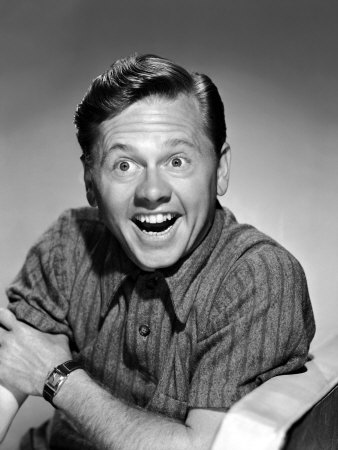 Born Joseph Yule Jr. in Brooklyn, Rooney made his stage debut at age 15 months in his family’s vaudeville act, Yule and Carter, as a midget in a tuxedo. His first film role in the silent “Not to Be Trusted” also found him playing a midget. Even as a child he demonstrated the ability to be a consummate clown and to move audiences with his sentimental renditions of songs like “Pal of My Cradle Days.” After his parent’s divorce, his mother Nell answered an ad placed by cartoonist Fontaine Fox, who was looking for a child actor to play the comicstrip character Mickey McGuire in a series of silent comedy shorts. Rooney appeared in almost 80 episodes of the popular serial, which continued to be churned out by Standard Film Corp. until 1932. His mother wanted to legally change his name to McGuire, but when Fox objected, she chose Rooney instead.
Born Joseph Yule Jr. in Brooklyn, Rooney made his stage debut at age 15 months in his family’s vaudeville act, Yule and Carter, as a midget in a tuxedo. His first film role in the silent “Not to Be Trusted” also found him playing a midget. Even as a child he demonstrated the ability to be a consummate clown and to move audiences with his sentimental renditions of songs like “Pal of My Cradle Days.” After his parent’s divorce, his mother Nell answered an ad placed by cartoonist Fontaine Fox, who was looking for a child actor to play the comicstrip character Mickey McGuire in a series of silent comedy shorts. Rooney appeared in almost 80 episodes of the popular serial, which continued to be churned out by Standard Film Corp. until 1932. His mother wanted to legally change his name to McGuire, but when Fox objected, she chose Rooney instead.
As a teenager, Rooney appeared in many popular films including Tom Mix Western “My Pal the King” and, memorably, as Puck in Max Reinhardt’s 1935 adaptation of “A Midsummer Night’s Dream.” In 1934, MGM signed him to a week-to-week contract; his first success was playing Clark Gable as a boy in “Manhattan Melodrama.” He slowly climbed up the star ladder, appearing in an adaptation of Eugene O’Neill’s “Ah Wilderness” and in “Little Lord Fauntleroy,” “Captains Courageous” and “Boy’s Town,” the latter two alongside Spencer Tracy.
But it was “A Family Affair,” a B-movie adaptation of the minor Broadway play “Skidding,” that first brought the world the Hardy family and its irrepressible son Andy, “the perfect composite of everybody’s kid brother,” according to critic Frank S. Nugent. With the surprise success of “A Family Affair,” the Hardy family, which included Lewis Stone (replacing Lionel Barrymore) as Judge Hardy and Spring Byington as his wife, embarked on a 15-film series of adventures in Americana. As star of one of the most successful series in film history, Rooney was earning $150,000 a year before his 20th birthday. In 1939, he was voted a special Oscar by the Academy of Motion Pictures Arts & Sciences.
The following year he was nominated for best actor in the film musical version of “Babes in Arms” with Judy Garland. “Mickey Rooney can act the legs off a centipede,” wrote the critic for the Sunday Times in London. It was the first of several memorable pairings with Garland including “Strike Up the Band,” “Babes on Broadway” and “Girl Crazy.”
His performance in the 1943 version of William Saroyan’s “The Human Comedy” brought a second nomination, and he played his first adult role opposite Elizabeth Taylor in “National Velvet.”
From 1944-46, Rooney served in the U.S. Army in the Jeep Theater, travelling 150,000 miles entertaining the troops and acting as a radio personality on the American Forces Network.
But after the war, Rooney’s attempt to make the transition from overaged teenager to full-fledged adult was rocky at best. MGM tried to give him a new image, casting him as a boxer in “Killer McCoy”; the musical version of “Ah Wilderness,” called “Summer Holiday,” also failed to please. The very qualities that had made him an appealing child star now began to grate. His energetic cockiness seemed forced and egotistical in an adult. The vaudeville-style humor and sentimentality were deemed annoying and precious by post-war audiences.
After settling his contract with MGM in a dispute over not being cast in the all-star war drama “Battleground,” Rooney made nightclub appearances as he rebuilt his career. His freelance movie assignments, such as “Quicksand,” sank without a trace. Only “The Bold and the Brave,” a WWII drama that brought him a third Oscar nomination, met with any success. The final Andy Hardy drama, 1958’s “Andy Hardy Comes Home,” found him as a successful lawyer and new head of the family. It was the final and least successful film in the series.
Rooney also tried directing, helming 1951’s “My True Story,” with Helen Walker as a jewel thief, and 1960’s “The Private Lives of Adam and Eve,” a complex comedy in which he also starred.
He experienced somewhat more success in television: He was nominated for Emmys for dramatic work on “Playhouse 90” effort “The Comedian,” considered a classic of golden-era television, and “Eddie” on “Alcoa Theatre.”He also appeared, less felicitously, in the mid-’50s series “The Mickey Rooney Show: Hey, Mulligan” on NBC and “Mickey,” which ran for a few months on ABC in 1964-65.
But in 1962, after filing for bankruptcy (the money had dwindled through his many divorces and because of his fondness for betting on “the ponies”), he embarked on a career as a character actor in films including “Breakfast at Tiffany’s,” “Requiem for a Heavyweight” and “It’s a Mad, Mad, Mad, Mad World.” His controversial “Breakfast at Tiffany’s” role as Mr. Yunioshi, a buck-toothed broadly comic caricature of a Japanese man, did not draw much ire when the film was first released but has since been condemned as racist.
Off the bigscreen, he toured the country on a double bill with singer Bobby Van and in summer stock.
In 1963, he appeared as the very first guest on “The Judy Garland Show” upon Garland’s insistence. And he appeared occasionally during the ’60s on comedy/variety shows such as “The Dean Martin Comedy Hour,” “The Smothers Brothers Comedy Hour” and “The Carol Burnett Show.” He guested on “Hollywood Squares” in 13 episodes between 1969 and 1976, and made 15 appearances on “The Tonight Show Starring Johnny Carson” from 1970-73.
Norman Lear considered him for role of Archie Bunker, but Rooney rejected the project just as Jackie Gleason had. Perhaps he felt the role of Santa Claus fit him better: Rooney did the voices for four Christmas TV animated/stop action specials over the years. He played Santa in “Santa Claus Is Comin’ to Town” (1970), “The Year Without a Santa Claus” (1974), “Rudolph and Frosty’s Christmas in July” (1979) and “A Miser Brothers’ Christmas” (2008) and also played St. Nick in a 1982 episode of “The Love Boat.”
In later years, Rooney continued to work hard and sometimes found notable success. He received an Oscar nomination for supporting actor in 1980 for “The Black Stallion.” He won an Emmy for “Bill” in 1982 and drew an Emmy nom for reprising the role in another CBS telepic two years later.
In addition to his success in the musical “Sugar Babies,” he made popular stage appearances in “A Funny Thing Happened on the Way to the Forum” and on Broadway in “The Will Rogers Follies.”
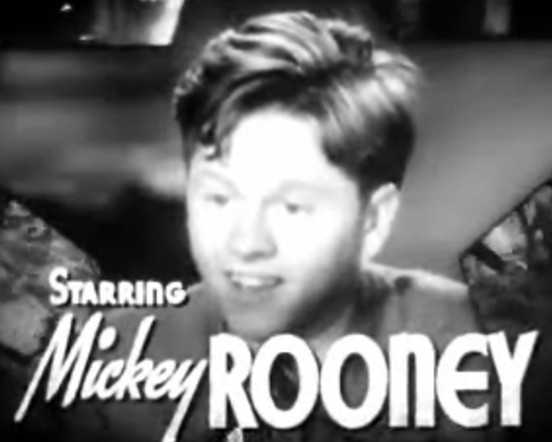 In 1982 he starred in a short-lived sitcom, “One of the Boys,” with Dana Carvey and Nathan Lane. He guested on “The Golden Girls” in 1988, on “Murder, She Wrote” in 1993 and on “ER” in 1998; he starred in “The New Adventures of the Black Stallion,” based on the film, for 57 episodes from 1990-93.
In 1982 he starred in a short-lived sitcom, “One of the Boys,” with Dana Carvey and Nathan Lane. He guested on “The Golden Girls” in 1988, on “Murder, She Wrote” in 1993 and on “ER” in 1998; he starred in “The New Adventures of the Black Stallion,” based on the film, for 57 episodes from 1990-93.
As he approached and then surpassed his 90th birthday, he labored on, appearing in 2006 in “Night at the Museum” and in 2011 in “The Muppets” feature, among several other films.
In 1993 he published autobiography “Life Is Too Short”; the next year he came out with a novel, Hollywood murder mystery “The Search for Sonny Skies.”
Rooney had battled the major studios and the Screen Actors Guild seeking TV residuals for his screen appearances before 1960 without success. In 2011 he revealed he had suffered another form of victimization. He was granted a temporary restraining order against his stepson, who was accused of withholding food and medicine and interfering in Rooney’s personal finances, which was subsequently replaced by a confidential agreement.
In March 2011 he testified before a special Senate committee considering legislation to curb abuses of senior citizens.
Rooney voyaged, as a special guest, as part of the TCM Classic Cruise in January 2013.
Rooney was married eight times, first and most famously to his MGM co-star Ava Gardner.
Son Tim Rooney died in 2006.
Mickey Rooney is survived by wife Jan Chamberlin, a singer he married in 1978; son Mickey Rooney Jr. from his marriage to singer Betty Jane Rase; son Theodore Michael Rooney from his marriage to actress Martha Vickers; daughters Kelly Ann Rooney, Kerry Rooney and Kimmy Sue Rooney and son Michael Joseph Rooney from his marriage to Barbara Ann Thomason; and daughter Jonelle Rooney and adopted son Jimmy Rooney from his marriage to Carolyn Hockett.
Harold Ramis, Actor Ghostbusters and Stripes, Dead at 69
From Variety:
 Harold Ramis, best known as an actor in “Ghostbusters” and “Stripes” and a writer/director for “Caddyshack” and “Groundhog Day” died Monday from complications related to auto-immune inflammatory vasculitis, a disease he battled for four years. He was 69.
Harold Ramis, best known as an actor in “Ghostbusters” and “Stripes” and a writer/director for “Caddyshack” and “Groundhog Day” died Monday from complications related to auto-immune inflammatory vasculitis, a disease he battled for four years. He was 69.
Born in Chicago, IL, Ramis got his start at the famed Second City improvisational group and made his big Hollywood breakthrough in 1978 when he co-wrote “National Lampoon’s Animal House,” starring John Belushi.
He went on to co-write and star opposite Bill Murray in “Stripes” (1981), “Ghostbusters” (1984) and “Ghostbusters II” (1989). He later co-wrote and made his directorial debut with Caddyshack (1980), followed by “National Lampoon’s Vacation” (1983).
Ramis most recently directed the 2009 comedy “Year One” starring Jack Black and Michael Cera and was also seen opposite Seth Rogen in Judd Apatow’s box office hit “Knocked Up.”
A trailblazer in the comedy world, Ramis was the recipient of the American Comedy Award, the British Comedy Award, and the BAFTA (British Academy) award for screenwriting.
In addition to his wife Erica, Ramis is survived by sons Julian and Daniel, daughter Violet and two grandchildren.
Country Radio Broadcasters Award Carrie Underwood “Artist Humanitarian”
Following in the footsteps of Big & Rich, country superstar Carrie Underwood was awarded the “Artist Humanitarian” Award during the opening ceremonies of the Country Radio Seminar Wednesday morning in Nashville. The award is handed out each year by Country Radio Broadcasters to the artist that best demonstrates dedication to charitable efforts.
Following an incredibly busy and successful year for Underwood, this award proves to be an appropriate cap in recognizing her efforts. Carrie attributes her efforts to the example her parents set. She remembers them pulling over to the side of the road to offer money to those in need, as well as helping those at church. Underwood has made children and animals the focus of her efforts, stating that “they need us. They haven’t made any wrong decisions in their lives. They haven’t done anything to anyone that could be malicious. They live in the garden and they love and it’s our jobs to take care of them.”
Kenny Alphin and John Rich – of Big & Rich – presented the award to Underwood at the Nashville Convention Center. “Carrie is aware of the platform she’s been given and wants to use it beyond performing to help change the world.” This platform that Carrie has built donated $1 million of her “Blown Away Tour” proceeds to the American Red Cross for Oklahoma Relief Efforts in May 2013. In November 2012, Underwood donated 100% of proceeds from her New Jersey show to Hurricane Sandy efforts. She has also started her own foundation, C.A.T.S. (Checotah Animal, Town, and School Foundation), to help with local causes and issues in her hometown of Checotah, OK. She also devoted some of her time to cleaning out kennels at animal shelters, among many other highlights and efforts.
C.A.T.S Foundation has met local needs ranging from scholarship school programs to funds for the volunteer fire department to purchase oxygen masks and tools to new school and community playgrounds to donated musical instruments to name a few.
“Those kinds of things, I feel like, make the biggest difference. It’s easy to give money to stuff, and I feel like there’s a lot of stuff that my husband (Nashville Predators hockey player Mike Fisher) and I get to be a part of where we’re like, ‘Please don’t put it out there.’ You want to do things to help people, but not for stuff.”
The singer goes on to state that she views this as her responsibility. “I am super blessed and I’ve been given so much,” she said. “If I did nothing but buy shiny things and spend it on stupid things, I just don’t think my mama would be proud of that, I don’t think I could be proud of that and I don’t think the good Lord would be too proud of that.”
Underwood calls for others to follow her lead. “If you see someone who needs help, help them. If something needs help, help it. I feel like those are what make the best stories, not so and so wrote a check. Just so and so came and cleaned out awful nasty kennels.”
Master of Comedy Sid Caesar Dead at 91
From Variety writer Richard Natale:
Sid Caesar, one of the first stars created by television via his weekly live comedy program “Your Show of Shows,” has died at 91. TV host Larry King announced the news on Twitter.
Caesar, partnered with Imogene Coca, is credited with breaking ripe comedic ground with the 90-minute live program: It didn’t rely on vaudeville or standup-inspired material but rather on long skits and sketches written by an impressive roster of comedy writers including Mel Brooks, Woody Allen, Neil Simon, Larry Gelbart, Lucille Kallen and Mel Tolkin.
“Your Show of Shows” was “different from other programs of its time because its humor was aimed at truth,” Simon once observed. “Other television shows would present situations with farcical characters; we would put real-life people into identifiable situations.”
Following Caesar’s Camelot-days in the ’50s, however, he made a precipitous decline into alcoholism and barbiturates, a self-described “20 year blackout” from which Caesar finally recovered and subsequently related in his 1982 autobiography “Where Have I Been. “At my worst, I had been downing eight Tuinals and a quart of Scotch a day,” Caesar recalled of his darkest days. “When I was awake I’d think of nothing but ‘I must do it faster, kill myself faster. I’d get up to take pills just to go back to sleep. I had no friends. My life was over.”
Sidney Caesar was born of immigrant parents in Yonkers, N.Y. As a youth he aspired to a musical career and practiced the saxophone, which he later studied formally for a brief time (along with the clarinet) at Juilliard. He worked for several orchestras including those of Charlie Spivak, Claude Thornhill and Shep Fields.
After enlisting in the U.S. Coast Guard prior to WWII, he wrote sketches for “Six On, Twelve Off,” a Coast Guard musical revue. Then Coast Guard officer Vernon Duke heard Caesar perform one of his foreign-language double-talk monologues (a later Caesar trademark) for the amusement of his fellow mates and hired him for a comic role in another Coast Guard musical, “Tars and Spars.”
It was while performing this show that he befriended producer Max Liebman, who cast him in the Columbia Pictures film version of the musical. After Caesar’s discharge from the armed forces, Col hired him at $500 a week but used him only in one film, “The Guilt of Janet Ames.”
After a year of working in Hollywood, he returned to New York and made his first nightclub appearance at the Copacabana. Joseph Hyman hired him for the Broadway revue “Make Mine Manhattan,” for which he received raves (he was “the most original item on the program,” wrote the New York Times reviewer). And he received a percentage of the show’s profits — almost unknown for a young performer. He won the 1948 Donaldson Award for the musical.
The following year Caesar made his television debut in Liebman’s “Admiral Broadway Revue,” where he met comedienne Coca. He was hailed as the find of the year and earned a princely $900 a week. But the show lasted only 19 weeks, shuttered because of high production costs.
But on Feb. 24, 1950, NBC launched “Your Show of Shows,” a revue of comedy sketches, ballet, modern dance, popular music and operatic selections. Directed and produced by Liebman, the program was broadcast live in front of an audience. Coca co-starred with Caesar, who was then receiving $4,000 a week for his services.
The show was an immediate success and was to become one of the most influential programs in TV’s golden era, launching the careers of Carl Reiner and Howard Morris, as well as the enviable team of writers including Simon, Brooks and Gelbart.
In 1954, when the ratings began to slip, the program was trimmed and renamed “Caesar’s Hour.” Coca was replaced by Nanette Fabray. The change enabled Caesar to last another three years on television. He was nominated for Emmys every year from 1951 to 1958 and won two.
The pressures of a live weekly TV show took its toll on Caesar, however. Success came so fast, he recalled, that “I lived in dread that some night onstage… I would be found out.”
“I know of no other comedian, including Chaplin, who could have done nearly 10 years of live television,” said Brooks. “Nobody’s talent was ever more used up than Sid’s.” Over the years, “Television ground him into sausages…until finally there was little of the muse left.”
For the next few years, Caesar continued to make club appearances, starred in the Broadway musical “Little Me” and toured with Neil Simon’s “Last of the Red Hot Lovers.” His movies included “It’s a Mad, Mad, Mad World” and Brooks’ “Silent Movie.”
But his addiction took its toll, and until he came out of it in the late ’70s, Caesar gradually disappeared from the scene. In the early ’80s, he hosted “Saturday Night Live” and toured with Coca in a stage show recalling some of the better “Show of Shows” material.
He also did a considerable amount of work in supporting and guest turns on film and TV. He was in “Grease” and “The Cheap Detective” in 1978, in Brooks’ “History of the World: Part I” in 1981 and he made two appearances on “Love Boat,” to name just a few of his credits from the period.
In 1995 he drew an Emmy nomination for his appearance on Diane English sitcom “Love and War.” He had quite a year in 1997, at age 75: He appeared on “Life With Louie” and “Mad About You” on TV, drawing an Emmy nom for the latter, and in the film “Vegas Vacation,” and he joined fellow TV icons Bob Hope and Milton Berle at the 50th anniversary Primetime Emmy Awards, where the three drew a long standing ovation.
On a 2001 episode of “Whose Line Is It Anyway?,” he reprised his famous foreign dub skit, receiving an extended standing ovation by the crowd as well as a surprise birthday cake from the cast and crew.
In 1985 he was inducted into the Television Academy Hall of Fame. In 2011 he received a lifetime achievement award from the Television Critics Assn.
Caesar’s second autobiography, “Caesar’s Hours,” was published in 2004.
His reign as the star of “Your Show of Shows” has been fictionally chronicled in the film “My Favorite Year” as well as in Simon’s Broadway comedy “Laughter on the 23rd Floor” and explored in the 2001 documentary “Hail Sid Caesar! The Golden Age of Comedy.”
As Coca once observed, “I’m tired of talking about ‘Your Show of Shows.’ But deep inside, I know I’ve done nothing as good since.”
Shirley Temple Black, Dead at 85
Shirley Temple, the child star phenomenon of the 1930s who went on to a career in international diplomacy, died Tuesday in California at age 85.
A statement from her family provided to news organizations said she died at home in Woodside, Calif., of natural causes. “She was surrounded by her family and caregivers,” the BBC quoted the statement as saying. “We salute her for a life of remarkable achievements as an actor, as a diplomat, and… our beloved mother, grandmother [and] great-grandmother.”
Shirley Temple was a child prodigy with a non-stop movie hits starting with “Little Miss Marker” in 1934. She went on to entertain America and the world during the Depression keeping 20th Century Fox alive and well. At just 10, Shirley Temple was one of the nations top wage earners. By 1938 she was making $10,000 a week, a staggering sum in those days.
Unfortunately, Temple was not going to survive the transition to adult performer like others and her acting career would come to a grinding halt. Instead, she focused her efforts on Government. She unsuccessfully ran for Congress, but became a U.S. representative at the United Nations, ambassador to Ghana, U.S. chief of protocol under President Gerald Ford and President George H.W. Bush’s ambassador to Czechoslovakia.
But in her heyday, Temple was a national treasure and an American icon, as big a star around the world as Greta Garbo or Charlie Chaplin. And though, except for a brief TV stint in the late ’50s, Temple was never onscreen after the 1940s, subsequent generations grew up with her films on television and video.
According to Variety:
“In 1958 she appeared on television as host and occasional actress in NBC fairy-tale anthology series “The Shirley Temple Storybook.” It lasted a year.
Another effort, “The Shirley Temple Show,” in 1960, was similarly unsuccessful, but Temple Black made guest appearances during the early 1960s on programs including “The Red Skelton Show” and “Sing Along With Mitch.”
In January 1965, she starred in the sitcom pilot “Go Fight City Hall,” in which she portrayed a social worker, but the show never went to series.
What began as volunteer charity work and a commitment to environmental causes led to Temple running for Congress in 1967. She lost to Pete McCloskey. Active in Richard Nixon’s 1968 election campaign, she was rewarded by the president with an appointment as a U.S. delegate to the United Nations. Her work led to her appointment as a delegate to the International Environmental Council in 1972.
That year she underwent a mastectomy to remove a malignant tumor. She received 50,000 letters of sympathy and went on to speak publicly about breast cancer, which at the time was not discussed widely.
Temple Black sat on the boards of corporations and organizations including the Walt Disney Co. and the National Wildlife Federation.
In 1974, President Gerald Ford appointed her ambassador to Ghana and in 1976 he brought her back to Washington as the first woman chief of protocol.
After Ford lost the 1978 election, she returned home. A decade later, George W. Bush named her as ambassador to Czechoslovakia.
In 1999 Temple Black hosted AFI’s “100 Years… 100 Stars” special on CBS.
Her autobiography, “Child Star,” was published in 1988, and in 2001, she served as a consultant on an ABC telepic adaptation called “Child Star: The Shirley Temple Story.”
Temple received the Kennedy Center Honors in 1998 and the Screen Actors Guild’s life achievement award in 2005.
Black and Temple remained married until his death in 2005.”
BREAKING NEWS: Actor Phillip Seymour Hoffman Found Dead in NY Apartment
Story developing ….
Actor Phillip Seymour Hoffman (46) has been found dead in his Manhattan apartment Sunday. Law enforcement officials confirmed the news, according to the Wall Street Journal.
The New York Police Department is investigating the death and the Chief Medical Examiner will be working to determine the cause of death. Mr. Hoffman was found dead at his apartment on Bethune street in the West Village of Manhattan. The NY Post reports that his death was due to a drug overdose.
He won the Academy Award for Best Actor in 2005 for his role in “Capote.”





